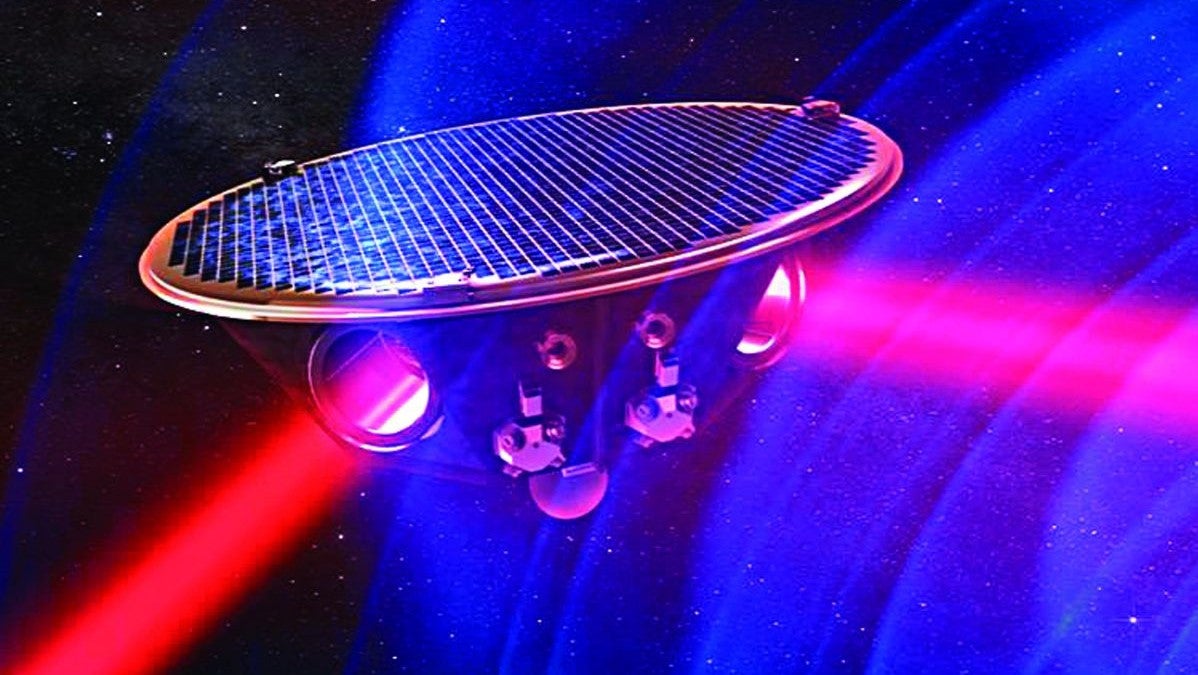NUS physicists contribute to first space mission to study gravitational waves
February 05, 2024“Where no man has gone before”, a popular phrase coined in Star Trek, a science fiction television series, embodies the seminal work of scientists on the Laser Interferometer Space Antenna (LISA) mission that will allow us to understand the Universe like never before – through tracking gravitational waves.
Announced on 25 January 2024, the European Space Agency (ESA) has officially approved the implementation of the LISA mission, marking the first scientific endeavour to develop and launch a space-based observatory to detect these waves, which are tiny ripples in spacetime caused by some of the most energetic astrophysical phenomena in the Universe.
Contributing to this venture is a group of scientists led by Assistant Professor Alvin CHUA from the Department of Physics, NUS. The NUS team, including senior research fellow Dr Soichiro ISOYAMA and research fellow Dr Josh MATHEWS from the same department, are part of the LISA Consortium of international scientists working on the LISA mission.
The road to LISA
In 1916, Albert Einstein predicted the existence of gravitational waves as a consequence of his Theory of General Relativity. Nearly a century later in 2015, scientists found direct evidence for this prediction by detecting gravitational waves on Earth with Laser Interferometer Gravitational-wave Observatory (LIGO) detectors. The next step, however, presents a unique challenge to scientists – detecting these gravitational waves from space.
LISA was approved as a candidate mission in 2017. Since then, the LISA consortium has made strides in developing the necessary science and technology that led to the mission being formally adopted by ESA for implementation today.
The primary objective of the LISA mission is to detect and measure gravitational waves at lower frequencies than that of LIGO. These can be produced by binary objects of similar mass to the Sun in our own Galaxy, as well as by binaries involving much more massive black holes that reside at the centres of other galaxies. LISA comprises three spacecraft that form a triangle with sides of 2.5 million kilometres – roughly six times the distance from the Earth to the Moon. This constellation of three spacecraft will trail Earth as it travels around the Sun.
The LISA mission went through three study phases, namely the assessment, feasibility and refinement phase, before recently transitioning to the implementation phase. During the study phases, researchers established the science case and requirements for the mission, and developed the necessary technologies to build LISA and prepare it for the launch into space. The team of NUS physicists was actively involved in this preparatory work, and in preparing key internal documents for ESA during the final study phase – the refinement phase – of the mission.
“Our most direct contribution to the final study report was to review and forecast the progress by the scientific community in providing theoretical models of gravitational-wave sources, which are of central importance if LISA is to attain its proposed scientific goals,” said Asst Prof Chua, who is an at-large member of the LISA Science Group’s core team and a member of the LISA Consortium Constituent Council, which is responsible for restructuring the consortium to facilitate close collaboration with ESA and the National Aeronautics and Space Administration (NASA). He also chairs two scientific work packages for the mission.
Once launched, LISA will observe a far richer population of astrophysical sources than ground-based gravitational-wave detectors, such as LIGO, to unlock the full scientific potential of gravitational-wave astronomy in solving the mysteries of our Universe.
Reaching for the stars
Although the LISA mission has been given the official go-ahead, the research still continues.
The team of NUS physicists will focus on studying astrophysical binary systems with extreme mass ratios of one to ten thousand or more. Such binary systems will be important sources for LISA, and they arise when objects around the mass of our Sun are captured by the massive black holes that reside at the centres of other galaxies.
“Following this encouraging achievement for the LISA mission, we will continue our research efforts to theoretically predict and analyse the gravitational waveforms radiated from binary systems, in order to enable the extraction of the signal from the noisy detector output and allow its physical interpretation,” said Dr Isoyama.
“One of our main research objectives in the near term is to develop an approximate next-generation model for extreme-mass-ratio binaries that can provide qualitatively reliable conclusions about various pressing issues in source modelling and data analysis for such sources. Our results will be invaluable in informing and guiding the larger scientific community as we build towards more accurate models,” added Asst Prof Chua.
More details on ESA’s announcement here.

The LISA mission is poised to launch a set of three spacecraft within the next decade to form a space-based observatory to detect gravitational waves. [Photo credit: AEI/MM/exozet; GW simulation: NASA/C. Henze]
Source: NUS News.


